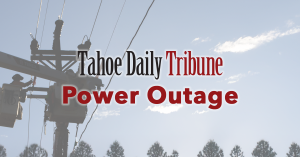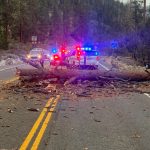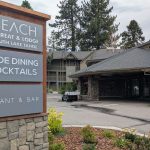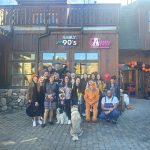Power Outages in Tahoe after Winds Heighten Fire Risk
The first light of Wednesday morning in Nevada’s Sierra Front was pierced by smoke and the roar of high winds. East Fork firefighters rushed to Jones Ranch Road after a 10-by-15-foot burn pile, fanned by 50–60 mph gusts around 5:40 a.m., ignited. The flames were quickly contained, though the area remains under safety-related power outages.
Due to the high risk of fire, NV Energy implemented a public safety outage at 2 a.m. Wednesday along the Sierra Front, covering the west side of Carson Valley and extending to Stateline. Restoration times have not yet been announced.
The outage affected 1,487 homes near Eaglewood Drive in Stateline and Tahoe Village. A planned safety outage has also been in effect since 1:17 a.m. on Nov. 5 near Apollo Way in Incline Village, affecting fewer than five homes. An unexpected outage at 7:27 a.m. also impacted 486 people near Tramway Road in Incline Village.
Liberty Utilities also implemented a precautionary outage at 1 a.m. for customers in Markleeville, Woodfords, Desolation Hotel (Hope Valley), Topaz, Coleville, and Walker due to extreme weather that increased wildfire risk. This outage could last more than 36 hours.
Strong winds were recorded throughout the region. Minden-Tahoe Airport reported gusts of 39 mph out of the south at 1:35 a.m. and 1:55 a.m., with sustained winds of 20–30 mph over four hours starting around 10 p.m. Tuesday. Highway 88 near Emigrant Trail saw gusts reach 45 mph at 12:40 a.m., just before Liberty Utilities implemented its outage.
According to The Sierra Avalanche Center Wednesday morning report by Brandon Schwartz, isolated avalanches could occur in locations where new snow falls on top of old snow. Northerly aspects above 8,500 feet are the terrain where snowpack structure of concern is most likely. Hikers, climbers, and hunters are the ones mostly likely moving around avalanche terrain in the mountains at this time. Early-season avalanches usually have consequences that involve impact with rocks.
“Keep in mind that any summer trails that pass through snow-covered northerly aspect terrain were probably not built with any thought to avalanche avoidance,” said Schwartz in the report. “Identify and travel cautiously around any areas of northerly aspect avalanche terrain.”

Support Local Journalism

Support Local Journalism
Readers around the Lake Tahoe Basin and beyond make the Tahoe Tribune's work possible. Your financial contribution supports our efforts to deliver quality, locally relevant journalism.
Now more than ever, your support is critical to help us keep our community informed about the evolving coronavirus pandemic and the impact it is having locally. Every contribution, however large or small, will make a difference.
Your donation will help us continue to cover COVID-19 and our other vital local news.










